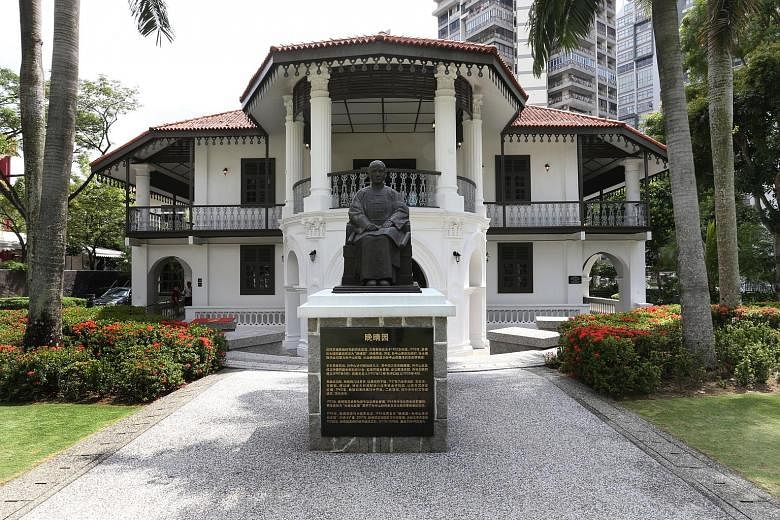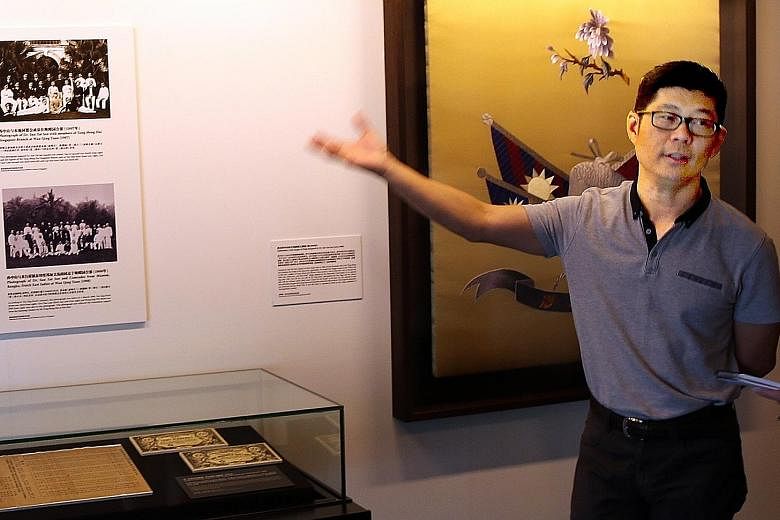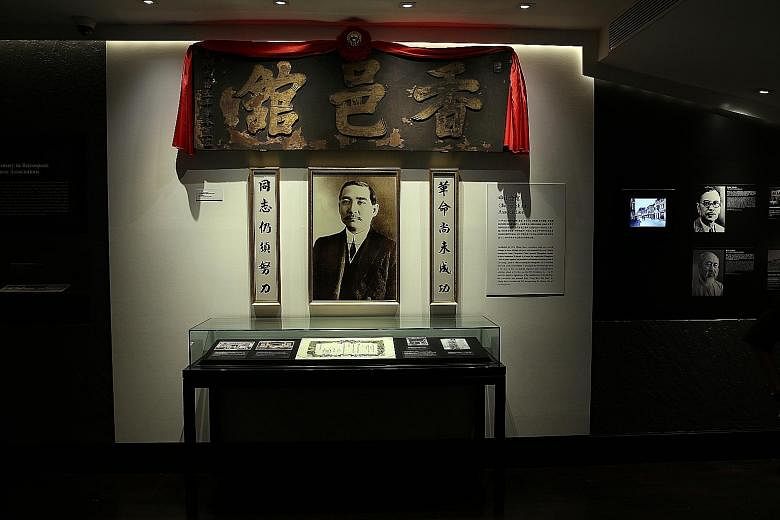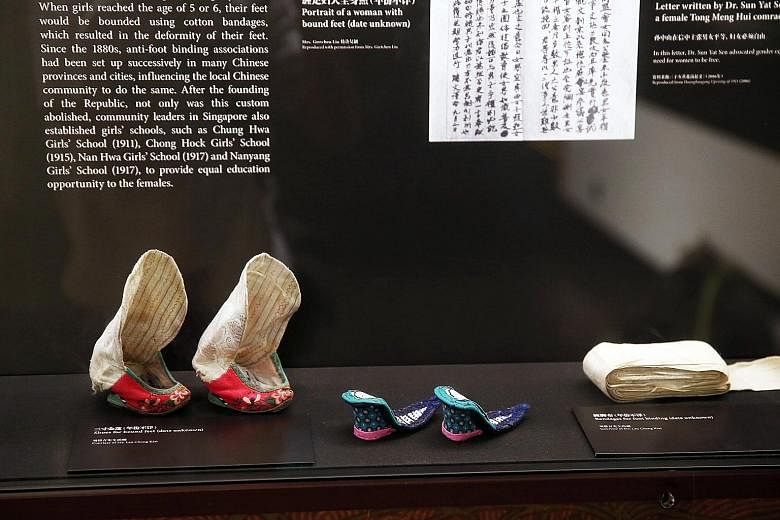In a quiet corner of Balestier sits a two-storey villa, where three out of the 10 uprisings that gave birth to modern China were planned.
The Sun Yat Sen Nanyang Memorial Hall was where the first Chinese president Sun Yat Sen planned the Huanggang Uprising of May 1907, the Zhennanguan Uprising of December 1907, and the Hekou Uprising of April 1908, all part of a movement that overthrew the Qing dynasty, and created the Republic of China in 1912.
The villa now serves as a testimony to the contributions of local Chinese pioneers and their historic connection to the 1911 Revolution. It was gazetted as a national monument in 1994.
Curator Tan Teng Phee said its building plan dates back to 1900, with notes on it showing that a $2 application fee was paid. "In 1902, an advertisement in The Straits Times said 'Newly furnished bungalow ready for sale', indicating that it was completed that year," Dr Tan said.
A wealthy Chinese merchant, Boey Chuan Poh, had built the villa on a sugar plantation and called it Bin Chan House. Teochew businessman Teo Eng Hock bought it as a retirement home for his mother in 1905, renaming it Wan Qing Yuan.
According to the National Heritage Board (NHB) Roots website, Sun met Teo in Singapore in July 1905, while travelling from Japan to Europe. He returned in April the following year, whereupon Teo invited him to stay at Wan Qing Yuan.
There, Sun established the Singapore branch of Tongmenghui, the Chinese Revolutionary Alliance, and from which he coordinated various activities in the region. With the support of Chinese communities globally, including in Singapore, Sun's movement succeeded in 1911. He died in 1925, aged 58.
Teo sold Wan Qing Yuan in 1910. Six Chinese community leaders collectively purchased it in 1937 and donated it to the Singapore Chinese Chamber of Commerce (SCCC), now known as the Singapore Chinese Chamber of Commerce and Industry, the following year.
In 1940, the Nanjing government funded its transformation into a memorial hall dedicated to Sun.
During the Japanese Occupation, the Japanese military used the estate as a communications base. The Kuomintang, or Nationalist government of China, set up an overseas branch there after the war, but was prohibited by the British in 1949.
Wan Qing Yuan returned to the SCCC and reopened as Sun Yat Sen Villa in 1966.
On what would have been Sun's 135th birthday in 2001, it was renamed Sun Yat Sen Nanyang Memorial Hall. NHB took over its management in 2009, refurbishing it and reopening it to the public on the centenary of the 1911 Revolution
Architecturally, Sun Yat Sen Nanyang Memorial Hall is a typical colonial villa built to suit the tropical climate. The verandahs on both sides buffer the walls from the sun's rays, while large windows provide ventilation. The spacious open room above the porch, supported by stately Corinthian columns, used to be a sitting area. Cast-iron railings wind along the upper floor.
Dr Tan said: "The building materials were imported from Europe. The pillars, railings and window frames are all original."
In the garden are two bronze statues of Sun Yat Sen and a long bronze wall mural depicting scenes from early 20th-century Singapore.
Senior manager Alvin Ting said there once was a stable in the back of the villa, when ox carts and horse-drawn carriages were the modes of transport.
"This location was also a strategic choice," explained Mr Ting. "Balestier was very quiet, where rich merchants could enjoy privacy. It allowed Sun Yat Sen to stay away from the limelight."
The villa currently houses four permanent galleries, featuring exhibits about the 1911 Revolution's local supporters, Sun Yat Sen's time in the villa, the establishment of the new Republic, and the 1911 Revolution's impact on the local Chinese community.
"We hold at least one special exhibition annually, collaborating with relevant institutions around the world," said Mr Ting. "Currently we are working with the Memorial of Wuchang Uprising of 1911 Revolution, from Wuhan, on the exhibition One Night in Wuchang: 1911 Revolution and Nanyang."
The Wuchang Uprising was the one that started the 1911 Revolution, and the exhibition will see more than 80 artefacts - such as vases, medallions and teapots - displayed in Singapore for the first time. It will open this Saturday.
To preserve the condition of the villa, periodic checks are conducted by the Preservation of Sites and Monuments (PSM). There is also a dedicated operations and estates team that works closely with NHB on infrastructure issues.
"We have to maintain the facade; and for anything that might affect the monument directly, we have to get permission from the PSM," said Mr Ting.
"We carry out facade checks almost on a daily basis. If there are any cracks, we will immediately rectify them."
The Sun Yat Sen Nanyang Memorial Hall is open six days a week, from 10am to 5pm. It is closed every Monday for maintenance works.
Receiving about 100,000 visitors annually, mostly local, it seeks to appeal to and educate the younger generation on the pioneers.
To cater to a younger audience, exhibitions include multimedia interactives, such as a hologram recreation of Sun Yat Sen's daily life and his meeting with locals, and activity booklets aimed at upper primary school pupils.
"What is very popular with them (the kids) now are photo booths, so we have one where we put backgrounds that have to do with the revolution," said Mr Ting.
"Many Singaporeans have heard of the pioneers, but don't really understand the extent of their contributions to Chinese history."





